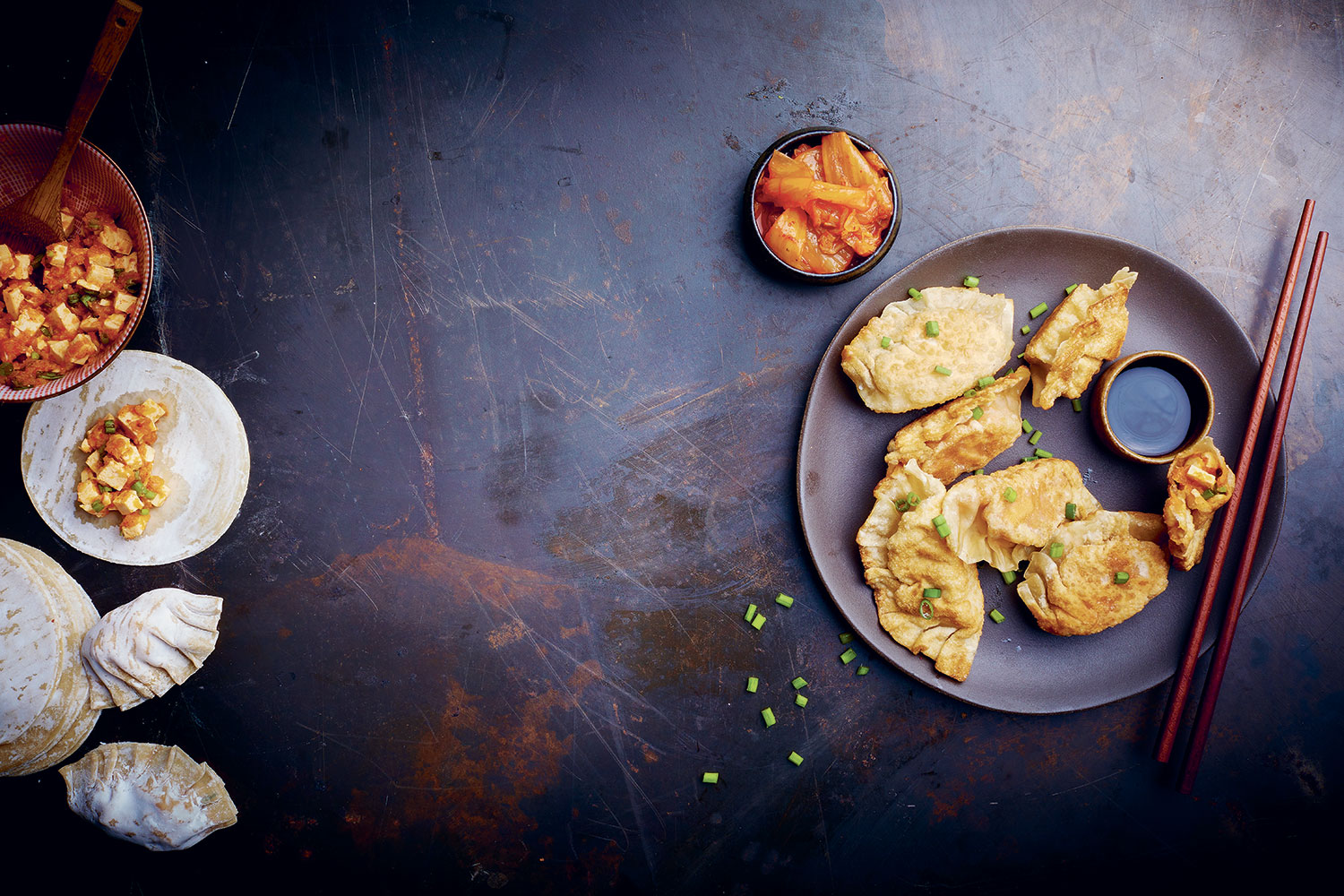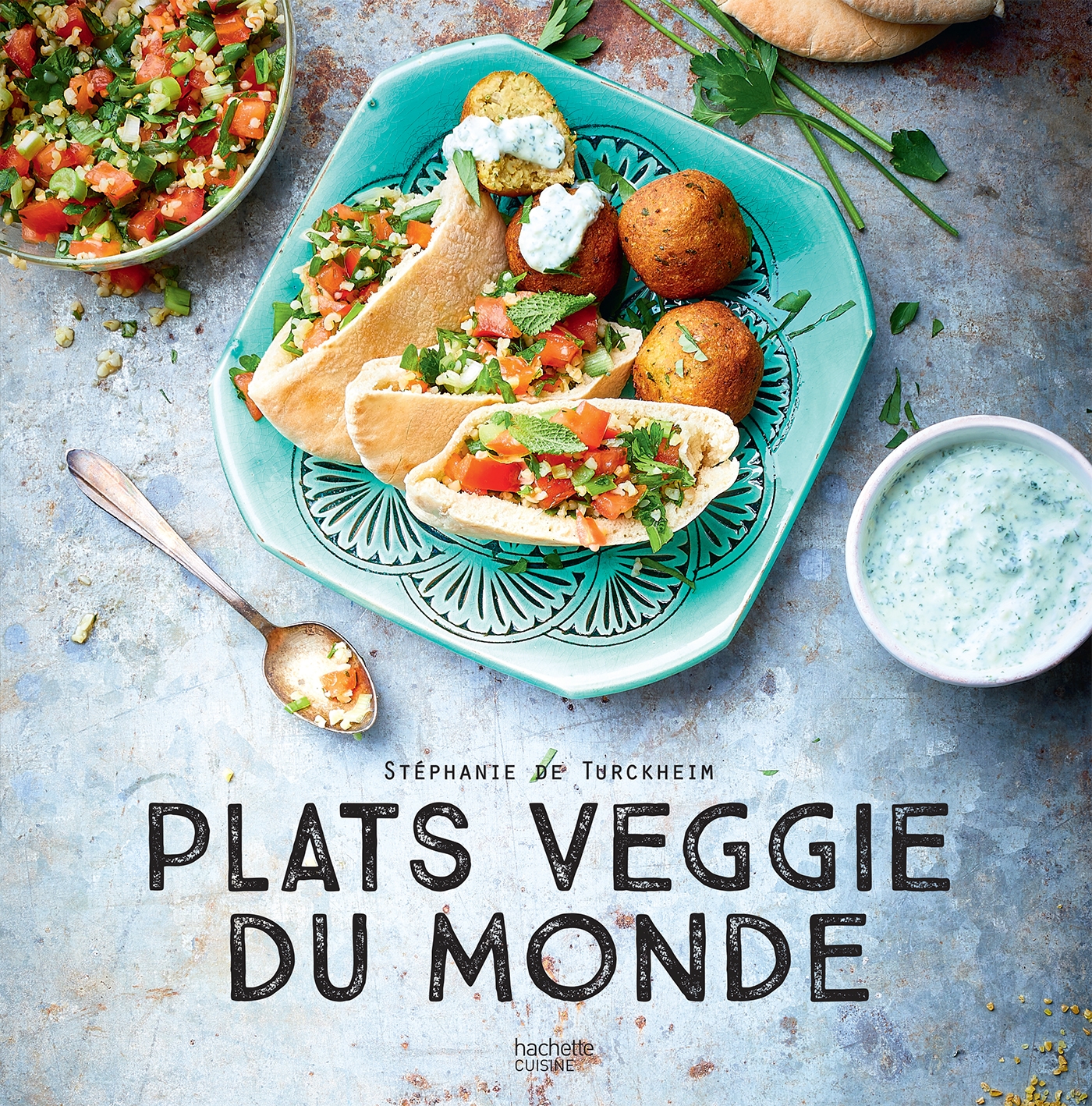Recipe for Vegetarian Gyoza with Kimchi
A hallmark of Japanese street food, here gyoza are given a vegetarian twist thanks to a spicy vegetable filling.

Taken from ‘Plats veggie du monde’ by Stéphanie De Turckheim, photographs by Bernard Radvaner. Styling: Jesiel Maxan for Hachette Cuisine.
In her book Plats veggie du monde (‘Veggie Dishes from Around the World’), Stéphanie de Turckheim offers one hundred recipes that draw inspiration from cuisine from across the continents. For this dish, the author combines Japanese and Korean influences. While gyoza—pan-fried, steamed, or poached dumplings—are integral to Japanese cuisine, kimchi, made from lacto-fermented vegetables and chilli, is intrinsically associated with South Korea.
In the introduction to her recipe, Stéphanie de Turckheim recommends placing the tofu (used in the filling) in a sieve and leaving it to drain for a few hours if it is not firm.
Serves 4
Ingredients
300 g kimchi
150 g firm tofu
4 tbsp Chinese chives
1 tbsp miso
40 gyoza wrappers (dumpling dough sheets)
2 tbsp vegetable oil
1 tbsp sesame oil
1 tbsp finely chopped Chinese chives
Method
Pour the kimchi into a mixer. Blend.
Cut the tofu into cubes and add it, along with the chives and the miso. Mix into a paste.
Take one gyoza wrapper and place 1 tsp of the filling in the centre.
Moisten the edges with water. Gently fold the wrapper, pinching the edges while rolling them gently in order to stick the pastry firmly together.
Repeat with the other 39 wrappers.
Pour the vegetable oil and sesame oil into a pan and brown the gyoza for four to five minutes, covered and over a low heat.
Drain on paper towels, sprinkle with the chopped chives, and eat warm with soy sauce.
Plats veggie du monde (‘Veggie Dishes from Around the World’) (2019), a recipe book by Stéphanie de Turckheim, is published by Hachette and is not currently available in English.
Stéphanie de Turckheim is an advisor in culinary creation and innovation. She also develops buffets for brands and press events and runs cookery workshops for children in Paris.

Taken from ‘Plats veggie du monde’ by Stéphanie De Turckheim, photographs by Bernard Radvaner. Styling: Jesiel Maxan for Hachette Cuisine.
TRENDING
-
The Tattoos that Marked the Criminals of the Edo Period
Traditional tattoos were strong signifiers; murderers had head tattoos, while theft might result in an arm tattoo.

-
Paris, Tokyo: Robert Compagnon
With his co-chef and talented wife, Jessica Yang, Robert Compagnon opened one of the top new restaurants in Paris: Le Rigmarole.
 3:31
3:31 -
Chiharu Shiota, Red Threads of the Soul
Last year, more than 660,000 people visited the retrospective 'Chiharu Shiota: The Soul Trembles' exhibit at the Mori Art Museum.

-
‘Before Doubting Others, Doubt Yourself. Who Can Truly Say a Dish Isn’t What It Used to Be?’
In ‘A Non-Conformist’s Guide to Surviving Society’, author Satoshi Ogawa shares his strategies for navigating everyday life.

-
The Story of Sada Yacco, the Geisha who Bewitched Europe
Described by Dazed magazine as the first beauty influencer, she has been restored to her former glory since 2019.





